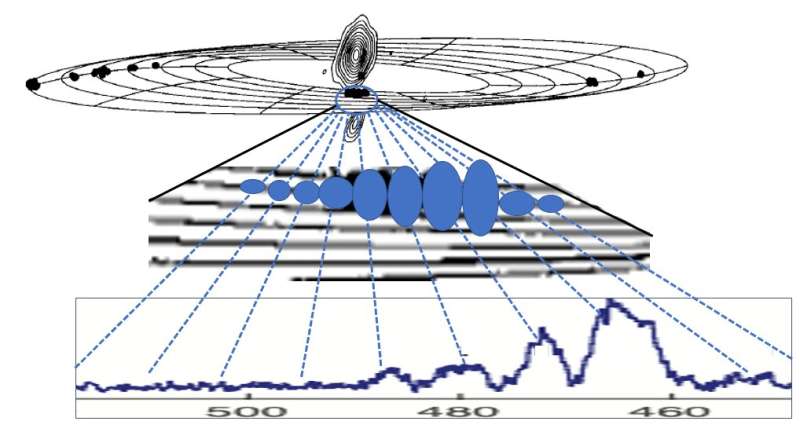
A research team led by Willem Adrianus Baan from the star formation and evolution research group of the XAO of the Chinese Academy of Sciences has found evidence for periodic disk instability in the disk of the H 2 O megamaser galaxy.
Their findings were published in a journal.
The H 2 O MegaMaser emission can be seen in a nearby galaxy called NGC 4258. The emission is coming from the fast-rotating disk surrounding the active galactic nucleus.
Space Very Long Baseline Interferometry (SVLBI) experiments were conducted with the Russian-built RadioAstron Observatory and large ground telescopes in the United States and Germany. The H 2 O MegaMaser emission was caused by a series of evenly distributed clouds inside the gas disk surrounding the nucleus.
The observations of 11 micro-arcseconds (3 x 10 -9 of a degree) correspond to a footprint of only 62AU at the galaxy, and were conducted with an Earth space connecting baseline of up to 19.5 Earth diameter. The emission regions were found to be inside the rotating thin disk at a small distance from the black hole.
The H 2 O MegaMaser emission comes from maser-amplification by excited/pumped water molecule as the multiple clouds drift in front of the radio continuum The formation of these emission regions, their regular velocity separation and their time- dependent emission seem to be consistent with a periodic magneto- rotational instability.
This type of shear instability can be caused by the differential rotation of the disk.
The first detailed view of an active galactic nucleus has been provided by these observations.
More information: Willem A. Baan et al, H2O MegaMaser emission in NGC 4258 indicative of a periodic disc instability, Nature Astronomy (2022). DOI: 10.1038/s41550-022-01706-y Journal information: Nature Astronomy